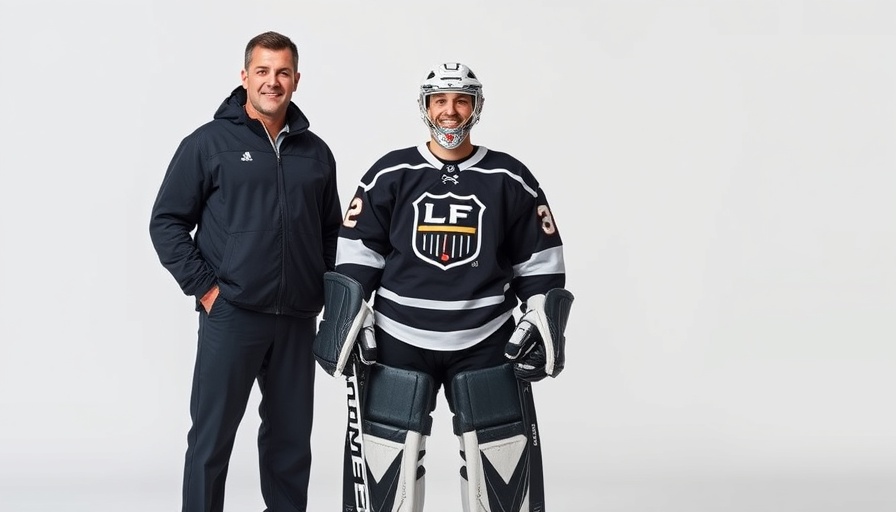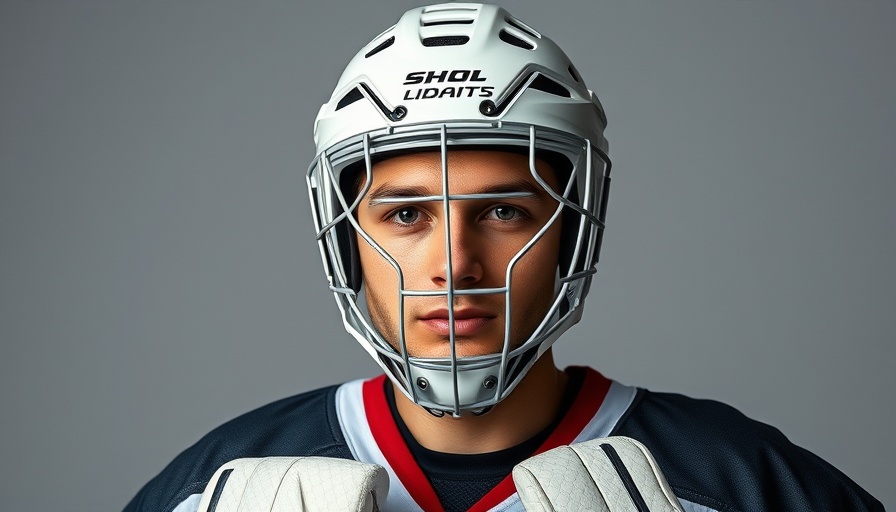
The Art of Reverse VH: Mastering Goaltending Techniques
In the exciting world of ice hockey, mastering the reverse VH technique can be a game-changer for goalies. The importance of this skill cannot be overstated; it's about positioning, balance, and effective puck control. As the video Proper RVH Technique + LONGEST "Goalie Face-Off" - Ice Hockey Goalies | Dahan Goaltending (Ep. 11) highlights, the RVH technique empowers goalies to engage shooters more effectively, transforming them from passive to proactive players in the crease.
In Proper RVH Technique + LONGEST "Goalie Face-Off" - Ice Hockey Goalies | Dahan Goaltending (Ep. 11), the discussion dives into essential goaltending techniques, exploring key insights that sparked deeper analysis on our end.
Why Reverse VH Technique Matters
The RVH or Reverse Vertical Horizontal tee gives goaltenders a unique edge. It requires three points of contact with the post—a crucial aspect often overlooked. As discussed in the tutorial, achieving a strong seal with your body helps maintain stability against shots while creating a barrier with your pads. This strong base enables goalies to absorb shots more effectively, reducing rebound chances and providing greater control over the puck.
Common Misconceptions About the RVH
One common misconception is that goaltenders using RVH are vulnerable to low shots or rebounds. However, when executed properly, this technique can greatly mitigate those risks. Goalies learn to angle their pads correctly and maintain optimal body posture, ultimately leading to better save percentages. The focus is on being proactive rather than reactive, ensuring that a goalie can recover and challenge the shooter again if necessary.
Strategic Benefits and Values of the RVH Technique
Incorporating the RVH into a goalie’s repertoire provides them with various strategic advantages. For instance, it allows them to control the lower part of the net, effectively eliminating many potential scoring opportunities. Additionally, well-prepared goalies can time their shifts more accurately, making it easier to play the puck effectively in transitional plays. Furthermore, parents and coaches can foster a growth mindset in young goalies by emphasizing the importance of mastering this technique during practice.
Tips for Mastering the Reverse VH
- Foot Placement: Ensure your foot maintains contact with the ice. Ideal positioning is crucial for maintaining balance while still effectively sealing off the opportunity for rebounds.
- Chin Up: Always focus on the puck, keeping your chin up. This helps maintain sightlines while still making necessary adjustments to your position.
- Practice Consistently: Regularly incorporating RVH drills into practice routines is essential. Simple repetition can lead to mastery over time. Moreover, challenging goalies with active shooters as seen in the video can enhance their situational awareness.
Empowering Goaltenders through Team Trust
Another aspect underscored in the video is the interaction between a goalie and their team. Trust fosters strong dynamics on ice, where defenders need to understand how their goalie operates and vice versa. This mutual understanding can be pivotal during high-stress game situations. Goalies can guide their teammates on how to support them effectively, especially during puck battles, enhancing overall team performance.
Inspirational Takeaways
As we look toward the future, mastering skills like the RVH sets young goalies up for success, not only in achieving better performance metrics but also in cultivating a deeper appreciation for the sport. The journey of a goalie mirrors that of every athlete—one filled with challenges, learning, and ultimately triumph. Always remember, the best saves come from diligent practice and an unyielding spirit.
Incorporating techniques like the RVH can redefine how a goalie interacts with their opponents and the game itself. So, whether you're a goalie, a coach, or a supportive parent, empowering the next generation of goaltenders with this important knowledge can lead to greater success in the crease.
 Add
Add 

 Add Row
Add Row 


Write A Comment